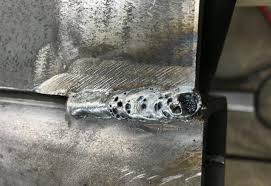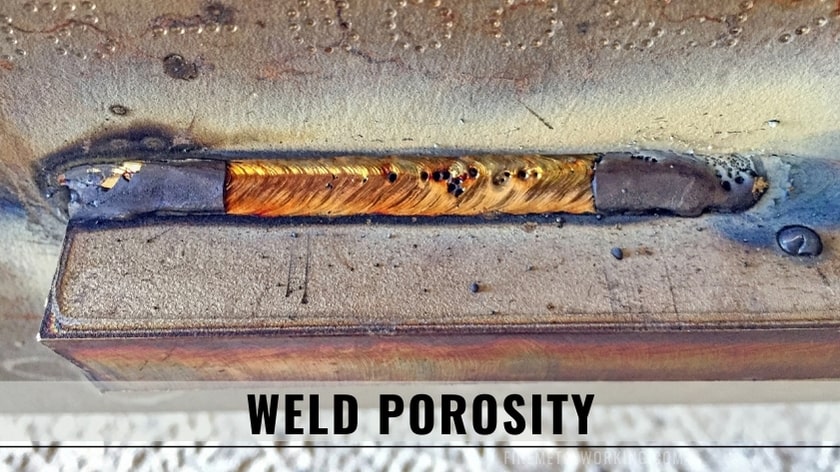Untangling the Enigma of Porosity in Welding: Tips for Lessening Problems and Optimizing Quality
In the complex world of welding, porosity remains a relentless obstacle that can significantly affect the quality and honesty of bonded joints. Comprehending the factors that add to porosity development is vital in the pursuit of perfect welds. By unwinding the mystery of porosity and executing reliable methods for problem minimization, welders can boost the requirements of their job to achieve premium high quality results. As we delve right into the midsts of porosity in welding, uncovering the tricks to its prevention and control will certainly be extremely important for experts looking for to master the art of high-quality weldments.
Recognizing Porosity in Welding
Porosity in welding, an usual issue run into by welders, describes the visibility of gas pockets or gaps in the welded material, which can compromise the honesty and top quality of the weld. These gas pockets are usually entraped throughout the welding procedure as a result of numerous variables such as inappropriate shielding gas, infected base materials, or wrong welding specifications. The formation of porosity can deteriorate the weld, making it prone to splitting and rust, inevitably resulting in structural failings.
Understanding the source of porosity is critical for welders to efficiently avoid its incident. By acknowledging the value of keeping appropriate gas securing, making sure the sanitation of base products, and optimizing welding settings, welders can substantially minimize the probability of porosity formation. In addition, using techniques like preheating the base material, utilizing correct welding methods, and conducting comprehensive examinations post-welding can additionally aid in minimizing porosity defects. Overall, a thorough understanding of porosity in welding is necessary for welders to produce high-quality and long lasting welds.

Common Reasons of Porosity
When inspecting welding procedures for prospective top quality concerns, recognizing the common causes of porosity is necessary for keeping weld honesty and stopping structural failings. Porosity, defined by the presence of dental caries or gaps in the weld steel, can considerably endanger the mechanical homes of a bonded joint.
Another widespread reason of porosity is the existence of wetness and contaminants on the surface area of the base metal or filler material. When welding products are not correctly cleaned up or are subjected to high degrees of humidity, the evaporation of these impurities during welding can create gaps within the weld grain. In addition, welding at incorrect criteria, such as exceedingly high traveling speeds or currents, can produce too much disturbance in the weld swimming pool, capturing gases and causing porosity. By addressing these typical causes through proper gas protecting, product preparation, and adherence to ideal welding specifications, welders can lessen porosity and improve the top quality of their welds.
Strategies for Porosity Prevention
Implementing reliable precautionary procedures is important in decreasing the occurrence of porosity in welding procedures. One method for porosity prevention is ensuring appropriate cleaning of click for more info the base steel prior to welding. Pollutants such as oil, grease, corrosion, and paint can cause porosity, so complete cleansing utilizing suitable solvents or mechanical techniques is important.

One more secret preventative measure is recommended you read the choice of the best welding consumables. Utilizing top notch filler materials and shielding gases that appropriate for the base metal and welding process can considerably lower the risk of porosity. Additionally, preserving appropriate welding specifications, such as voltage, current, take a trip speed, and gas circulation price, is crucial for porosity prevention. Differing the advised setups can result in improper gas coverage and insufficient combination, causing porosity.
Additionally, employing proper welding techniques, such as preserving a regular travel rate, electrode angle, and arc length, can assist stop porosity (What is Porosity). Ample training of welders to ensure they adhere to best techniques and quality assurance procedures is likewise crucial in decreasing porosity issues in welding

Best Practices for High Quality Welds
Ensuring adherence to industry requirements and proper weld joint prep work are fundamental facets of accomplishing regularly top quality welds. In enhancement to these foundational steps, there are a number of best practices that welders can execute to even more enhance the high quality of their welds. One key technique is maintaining correct tidiness in the welding location. Impurities such as oil, oil, corrosion, and paint can negatively affect address the top quality of the weld, causing problems. Completely cleaning up the work surface and bordering location prior to welding can assist alleviate these concerns.
Another finest method is to carefully choose the ideal welding parameters for the particular products being joined. Correct criterion option makes sure optimum weld penetration, combination, and total top quality. Making use of top quality welding consumables, such as electrodes and filler steels, can considerably impact the final weld high quality.
Importance of Porosity Control
Porosity control plays an important role in guaranteeing the honesty and high quality of welding joints. Porosity, characterized by the presence of dental caries or gaps within the weld steel, can dramatically compromise the mechanical homes and architectural honesty of the weld. Too much porosity compromises the weld, making it much more vulnerable to breaking, deterioration, and total failing under functional lots.
Effective porosity control is vital for keeping the preferred mechanical residential properties, such as stamina, ductility, and toughness, of the welded joint. What is Porosity. By decreasing porosity, welders can boost the general quality and reliability of the weld, making certain that it meets the performance needs of the intended application
Furthermore, porosity control is crucial for achieving the wanted aesthetic appearance of the weld. Excessive porosity not only compromises the weld yet also takes away from its visual charm, which can be crucial in industries where visual appeals are essential. Correct porosity control techniques, such as making use of the appropriate protecting gas, regulating the welding parameters, and making sure appropriate sanitation of the base materials, are vital for producing high-grade welds with marginal defects.

Conclusion
In verdict, porosity in welding is a typical flaw that can jeopardize the quality of the weld. It is vital to manage porosity in welding to make sure the integrity and stamina of the final item.